(Part of the Blog for Darwin blogswarm)
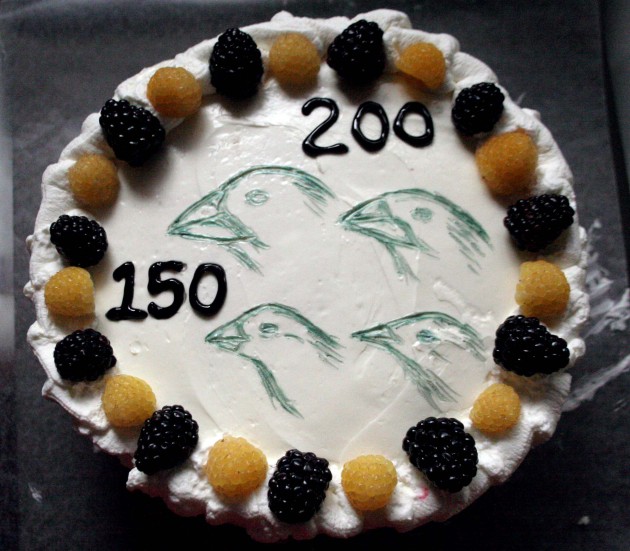
Few things make you appreciate food the way making it yourself does. One food I don’t particularly appreciate is cake – I’ll eat it, but I prefer my desserts chewy and unfrosted. So I decided to take the occasion of Darwin’s birth to temper my sweet indifference, and made him a birthday cake. Not the pour out of a box add an egg into the oven kind, but an honest to goodness full-on buttercream frosted layer cake from scratch.
d
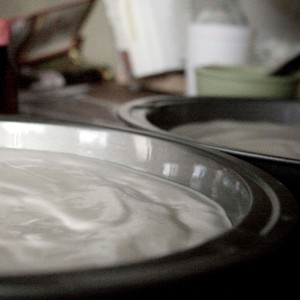 For this special event, I used Dorie Greenspan‘s “Perfect Party Cake” recipe – a white cake that sounded simple, elegant, and delicious. Lemon zest and lemon extract adds a special touch. For the base, I followed the recipe exactly, using buttermilk where it gave the option. While baking, however, I may have pulled the two rounds from the oven a couple minutes too soon; a toothpick inserted into the middle came out clean, but the tops probably should have been a bit springier. No matter, I popped them out to cool and set to work on the frosting.
For this special event, I used Dorie Greenspan‘s “Perfect Party Cake” recipe – a white cake that sounded simple, elegant, and delicious. Lemon zest and lemon extract adds a special touch. For the base, I followed the recipe exactly, using buttermilk where it gave the option. While baking, however, I may have pulled the two rounds from the oven a couple minutes too soon; a toothpick inserted into the middle came out clean, but the tops probably should have been a bit springier. No matter, I popped them out to cool and set to work on the frosting.
a
Not much for frosting, and aghast at the amount of butter that went into it, I cut the buttercream recipe in half and made a batch of fresh whipped cream to substitute (not exactly healthier, but I love whipped cream and at least I don’t have to see the sticks of butter going in). I probably stopped mixing the buttercream mixture too soon before adding the lemon juice since I wasn’t sure what “thick and smooth” meant and I was getting impatient (really? 6-10 minutes of mixing?!), but afterward I was able to beat it into more of a frosting consistency (oh, that’s what thick and smooth means!). Making whipped cream is always a test of patience as well. Times like these I wish I had a stand mixer – I did a good 20-30 minutes of hand mixing for this! All for you, Mr. Darwin.
r
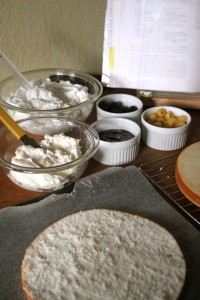 Then came the most dreaded part – sawing the cake rounds in half. Terrible visions of lopsided, crumbled cake fragments filled my head, but I did fine. Not wanting to push my luck, I opted to leave the second round alone, as it wasn’t quite as thick. Then came the fun part – assembling and decorating the cake! Alternating cake rounds with layers of raspberry jam and whipped cream, I topped off the final round and the sides with the buttercream frosting. My first buttercream frosted layer cake! Adding another first, I tried the baker’s trick of using a Ziploc bag to pipe a border of whipped cream around the top. Now, what to put on the blank canvas? A drawing of the Beagle or a beagle? A map of the Galapagos islands? A phylogenetic tree? I settled on the birds that inspired Darwin’s theory of speciation. Finally, I finished the decoration with fresh berries, rather than coconut as the recipe suggests.
Then came the most dreaded part – sawing the cake rounds in half. Terrible visions of lopsided, crumbled cake fragments filled my head, but I did fine. Not wanting to push my luck, I opted to leave the second round alone, as it wasn’t quite as thick. Then came the fun part – assembling and decorating the cake! Alternating cake rounds with layers of raspberry jam and whipped cream, I topped off the final round and the sides with the buttercream frosting. My first buttercream frosted layer cake! Adding another first, I tried the baker’s trick of using a Ziploc bag to pipe a border of whipped cream around the top. Now, what to put on the blank canvas? A drawing of the Beagle or a beagle? A map of the Galapagos islands? A phylogenetic tree? I settled on the birds that inspired Darwin’s theory of speciation. Finally, I finished the decoration with fresh berries, rather than coconut as the recipe suggests.
w
i
Below is the recipe transcribed from Greenspan’s book, Baking: From my home to yours, with my variations.
For the cake:
2 1/4 cups cake flour
1 Tbsp baking powder
1/2 tsp salt
1 14/ cups buttermilk (or whole milk)
4 large egg whites
1 1/2 cups white sugar
2 tsp grated lemon zest
1 stick (8 Tbsp) unsalted butter at room temperature
1/2 tsp pure lemon extract
Center a rack in the oven and preheat to 350 deg F. Butter two 9×2″ round cake pans and line the bottoms with a round of buttered parchment or wax paper. Put the pans on a baking sheet.
Sift together the flour, baking powder, and salt. Whisk together buttermilk and eggs. Put the sugar and lemon zest in a large bowl and rub together with your fingers until the sugar is moist and fragrant. Add the butter and beat at medium speed for a full 3 minutes, until the mixture is very light. Beat in the extract, then beat in 1/3 of the flour mixture. Beat in half of the egg mixture, then half of the remaining flour mixture, then the rest of the egg mixture, and finally the rest of the flour mixture, beating until well incorporated each time. Beat the batter for an additional 2 minutes to ensure that it is well mixed and aerated.
Divide the batter between the two pans, smooth the tops (you might try making a slight depression in the middle to reduce doming), and bake for 30-35 minutes, or until the cakes are well-risen and springy to the touch. A toothpick inserted into the centers should come out clean. Transfer the pans to cooling racks for about 5 minutes, then remove the cakes from the pans, peel off the liners, and let cool completely right side up.
To make the buttercream (for top and sides only):
1/2 cup white sugar
2 large egg whites
1 1/2 sticks (12 Tbsp) unsalted butter at room temperature
1/8 cup fresh lemon juice, strained
1/2 tsp vanilla extract
Put the sugar and egg whites in a medium heatproof bowl and fit it over a pan of simmering water. Whisk constantly over the heat until the mixture feels hot to the touch, about 3 minutes. Remove the bowl from the heat and beat the mixture with a whisk or hand mixer at medium speed until it is cool, about 5 minutes. Add the butter 1/2 stick at a time, stirring with a spatula. Once the butter is all in, beat the buttercream on medium-high speed until it is thick and very smooth – the consistency of frosting – about 6-10 minutes. If the buttercream curdles or separates, just keep beating and it will come together again. Gradually beat in the lemon juice on medium speed, waiting until each addition is absorbed before adding more. Finally, beat in the vanilla. Press a piece of plastic wrap against the surface of the buttercream and set aside.
To make the whipped cream:
1 cup heavy whipping cream, chilled
1/8 cup white sugar
1/2 tsp vanilla extract
Combine the cold whipping cream, sugar, and vanilla in a medium bowl. Beat on medium-high speed until stiff peaks form, about 10-15 minutes (chilling the bowl may speed up this process). You want the whipped cream to be fairly thick.
To assemble and decorate the cake:
Prepare about 2/3 cup raspberry jam by stirring vigorously to loosen.Using a sharp serrated knife and a gentle sawing motion, slice each cake round horizontally in half (if the round is at least 1 1/2 inches thick). Put one layer cut side up on a cake plate or cardboard cake round. Spread it with the jam, then cover with a layer of whipped cream. Top with another cake round, and spread again with jam and cover with a layer of whipped cream. (Repeat if you have 4 total cake rounds.) Place the last layer cut side down on top of the cake and frost the top and sides with buttercream.
To finish this lovely cake, decorate with your favorite icings, cake decorating pens, more whipped cream, fresh berries, mint leaves, chocolate curls – whatever floats your Beagle!
n
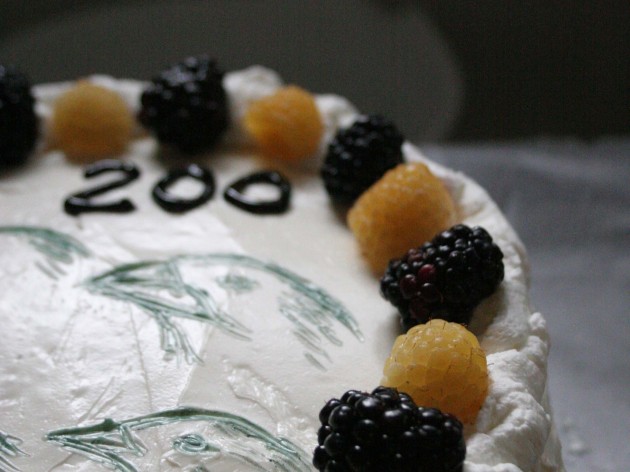
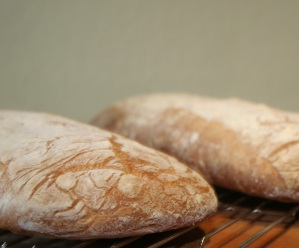
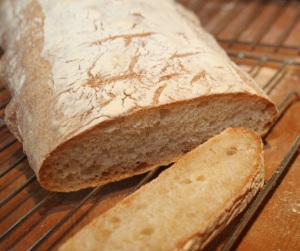
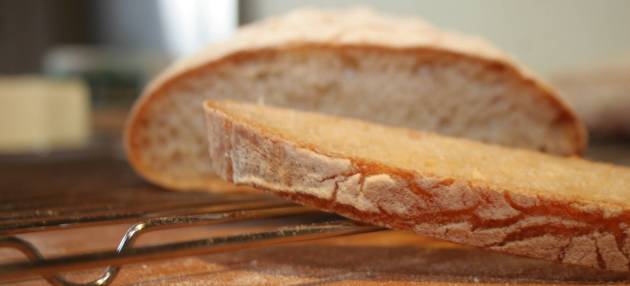

 For this special event, I used
For this special event, I used  Then came the most dreaded part – sawing the cake rounds in half. Terrible visions of lopsided, crumbled cake fragments filled my head, but I did fine. Not wanting to push my luck, I opted to leave the second round alone, as it wasn’t quite as thick. Then came the fun part – assembling and decorating the cake! Alternating cake rounds with layers of raspberry jam and whipped cream, I topped off the final round and the sides with the buttercream frosting. My first buttercream frosted layer cake! Adding another first, I tried the baker’s trick of using a Ziploc bag to pipe a border of whipped cream around the top. Now, what to put on the blank canvas? A drawing of the
Then came the most dreaded part – sawing the cake rounds in half. Terrible visions of lopsided, crumbled cake fragments filled my head, but I did fine. Not wanting to push my luck, I opted to leave the second round alone, as it wasn’t quite as thick. Then came the fun part – assembling and decorating the cake! Alternating cake rounds with layers of raspberry jam and whipped cream, I topped off the final round and the sides with the buttercream frosting. My first buttercream frosted layer cake! Adding another first, I tried the baker’s trick of using a Ziploc bag to pipe a border of whipped cream around the top. Now, what to put on the blank canvas? A drawing of the 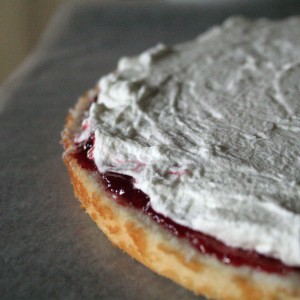
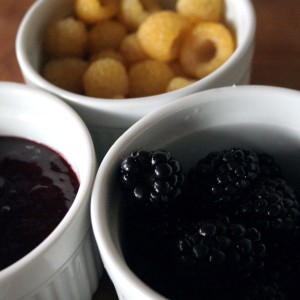
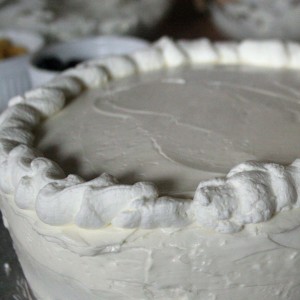

Latest comments